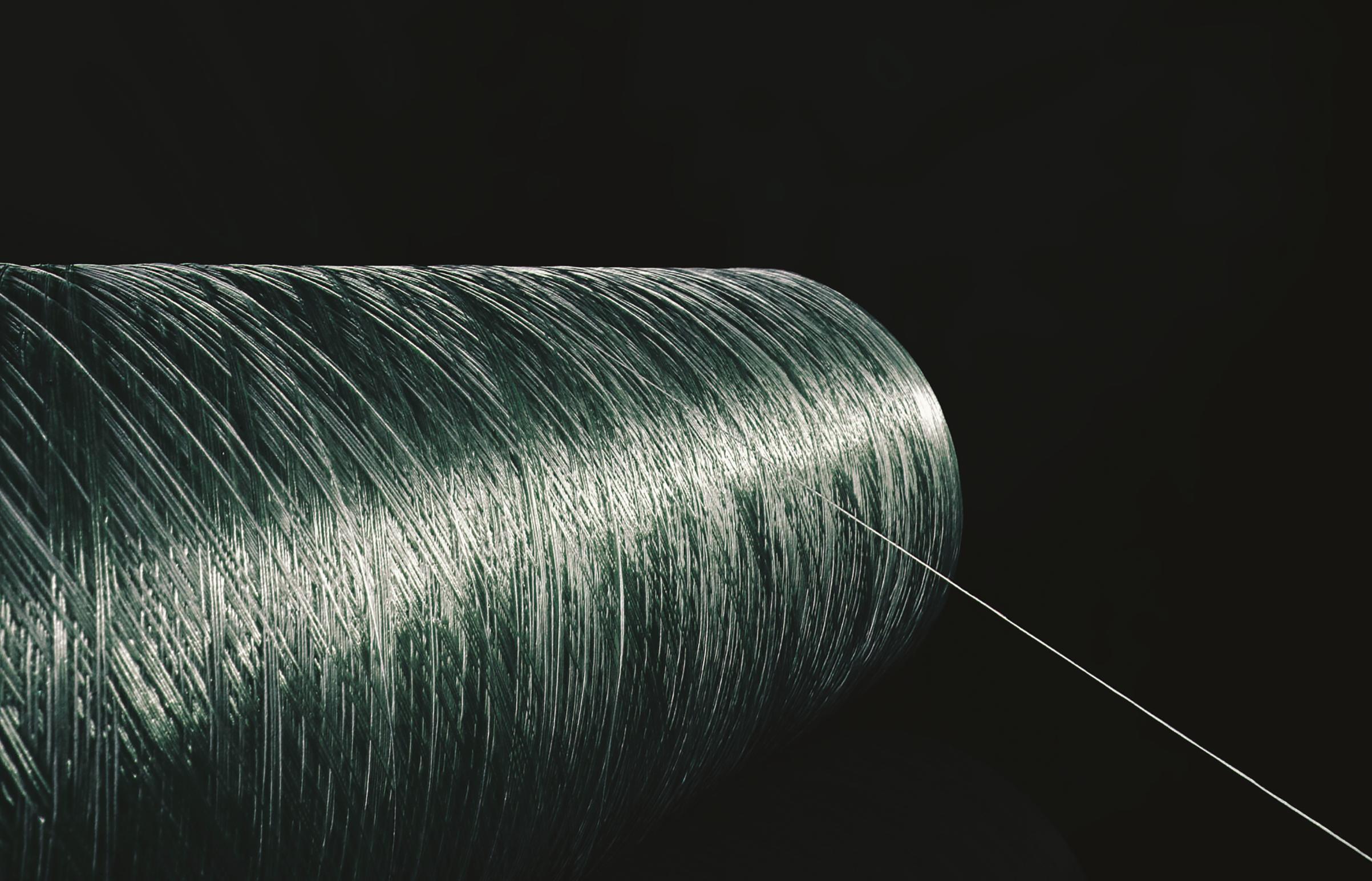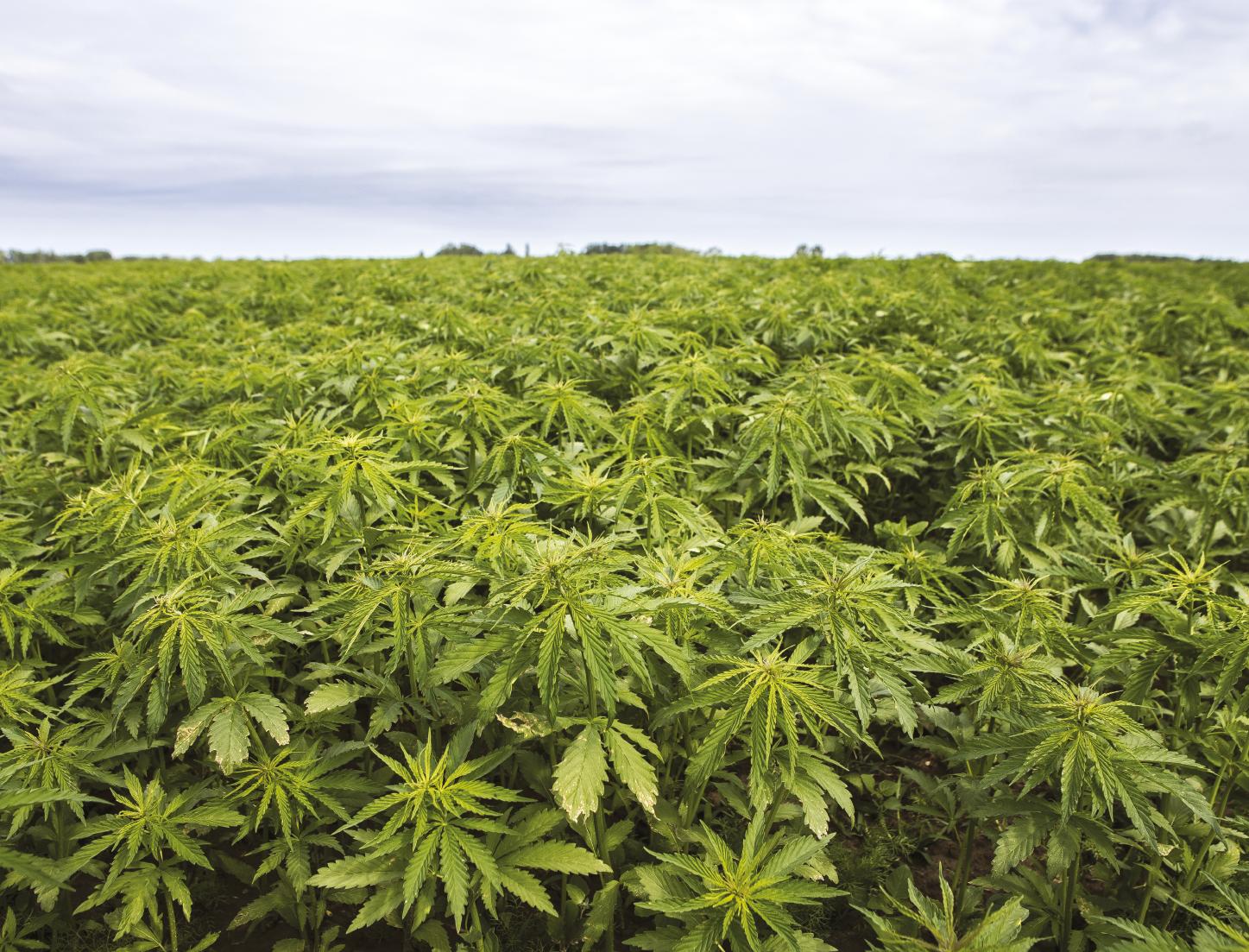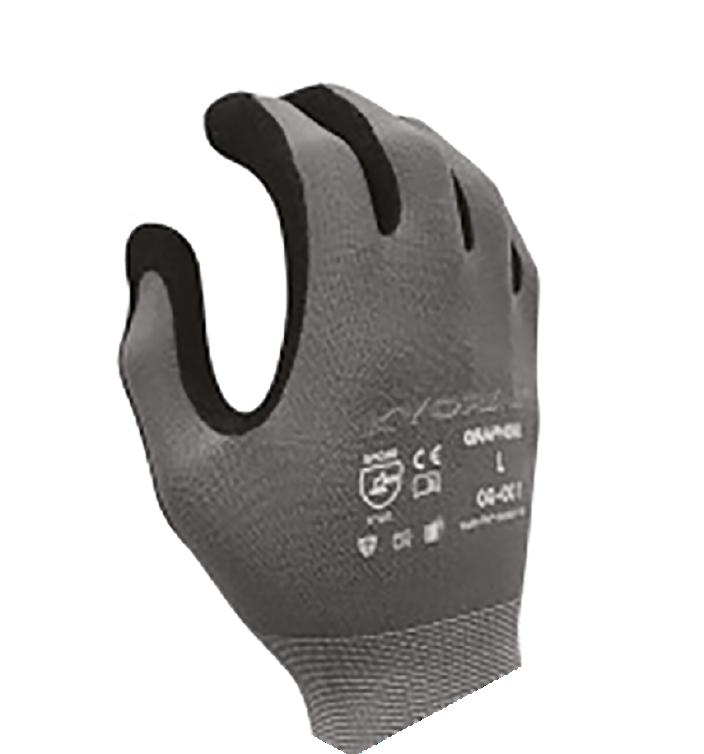
7 minute read
Future Fibers-Innovative Fibers are set to Improve Textile Sustainability
FIBERS
Innovative fibers are set to improve textile sustainability.
By Cary Sherburne
It is estimated that some 60% of apparel is made of petroleum-based polyester or polyester blends. As the world moves to diminish its reliance on petroleum, polyester fabrics are an attractive target.
Although waste fabric and used clothing can be recycled to create fibers that can be again put to use in a circular economy model, it does not appear that this is being done on any kind of massive scale. Collection can be difficult, and detection of the exact composition of the fabric can be equally problematic.
We encourage continued development of recycling processes for polyester and polyester blends, since they are not going away anytime soon, and they are taking up a lot of landfill space.
In parallel, however, there are several initiatives underway to develop more sustainable fibers that are made from natural materials. At the same time, digital textile printing continues to evolve – especially pigment inks – that will allow quality printing on fabrics made from these new fibers, suitable for a variety of uses, including apparel.
HeiQ AeoniQ spun filament (Image sourced from HeiQ)
Conventional analog printing and dyeing processes, of course, will also continue to be used for the foreseeable future, but to the extent significant volume can be offloaded to digital technologies, sustainability will be improved, especially for smaller and customized runs.
We are interested in hearing from companies that are working on sustainable fibers for the future, but in the meantime, here are a few examples of new or improved fibers we have learned about.
HeiQ AeoniQ
HeiQ is an innovative company founded in 2005, and is well-known as a developer of a variety of textile finishes.
“We have come up with more than 200 innovations so far and have received 19 awards for our work,” said Carmen Danner, director of business development. “In these development efforts, we work closely with research institutes and universities to align our efforts with the needs of the industry and the private sector.”
We were interested to see an announcement late last year from HeiQ concerning development of not only a new fiber, but also spinning the yarn as a continuous filament. This is the first foray into fiber for the company. It’s long-term goal with this new fiber, AeoniQ, is to provide the textile industry with a more sustainable solution with a smaller CO2 footprint and a reduction of microplastics pollution.
AeoniQ is created from 100% natural cellulosic feed stock. The first target is next-to-skin garments with first trials in the knitted sector, with woven to follow. Other industry segments, such as automotive, will be targeted in the future.
“We use a very special and quite flexible process to make the fiber that can use different types of cellulosics, such as pulp coming from food, and a variety of recycled cellulose, including recycled cotton, viscose and other not-so-commonlyused cellulose sources like algae or bacteria,” said Enrique Herrero Acero, chief technology officer for HeiQ AeoniQ. “It’s basically a drop-in solution – whatever you can do with a cellulosic fiber you can do with AeoniQ.”
This R&D project is in the middle of the lab stage and pilot plant phase.
“We have approached a number of partners to come on board to make this a fully commercialized product,” Danner said. “We are building a pilot plant in Austria, and the next step will be to build a full production plant in Europe by 2024. The goal is to reach mass production levels in 2025. This means not only our brand partners, but for everybody, because we really want to drive change in fashion.” Scan to Listen or find
article at PrintingNews. com/21159451
9FIBER
9FIBER is a start-up in the industrial hemp material converter space backed by 10 years of R&D, according to Adin Alai, CEO.


They take agricultural waste and hemp stalks and stems and convert them into two main ingredients: bast fiber, which is the outer skin of the plant, and cellulose, which is the inner or woody core of the plant.
“We have a patented technology that allows us to remove all the impurities and contaminants from both of these elements,” Alai said. “This eco-friendly degumming and decontamination technology allows us to unlock the potential of this material and insert it into our nine target markets, creating multiple end products within those nine markets.”
In textiles, like in the paper industry, degumming and decontamination, getting rid of herbicides and pesticides, heavy metals, gum, lignum, pectin, wax, etc., the process typically uses caustic chemicals and acids, and is largely done overseas, according to Alai. 9FIBER’s solution is to accomplish that process stateside with only water and oxygen as emissions.
“That same technology is used in cleaning of other materials such as plastics and paper,” Alai said. “Once the material is prepared the right way, there are a ton of applications for it. We see ourselves as the door that unlocks the potential of these plants by running it through our process. This includes not only textiles but also automotive, paper, plastics, nonwovens and semiconductors. There has also been progress in labs to use hemp as a source for creating graphene.”
Alai points out that industrial hemp grows to maturity in 90 to 100 days, with two growing seasons in warmer climates.
“According to a study that was done in the UK, hemp has about a 4X ability to carbon sequester than trees do,” Alai said. “It’s a biomass material that’s renewable, usable, sequesters more carbon, and you don’t have to cut down as many trees, which obviously take much longer to get to maturity. The timber industry is well-established, and we are not going to stop cutting down trees in the near term. You can’t just slide hemp into the process; there has to be quite a bit of R&D in order to see how well you can replicate it and which cultivars are best at doing that. The entire industry is in that learning phase right now.”
TENCEL
Another sustainable fiber that has been around for 30 years, but has been continuously improved over that time is TENCEL branded lyocell and modal fibers, manufactured by Lenzing AG.
Dress created using TENCEL fibers.

It is produced from sustainablysourced wood using environmentally responsible processes. TENCEL lyocell fibers are versatile and can be combined with a wide range of textile fibers such as cotton, polyester, acrylic, wool and silk to enhance fabrics with regard to their aesthetics, performance and functionality. TENCEL modal fibers can be blended with most fibers and processed using conventional machinery.
TENCEL modal is a highly compatible blending partner for cotton, and owing to the fiber’s sleek cross-section, adds longlasting softness to fabrics, enhancing the touch even after repeated washing. Blending fibers with TENCEL modal fibers significantly improves softness and overall comfort.
Depending on how they are used, TENCEL lyocell and modal fibers can offer a range of benefits including efficient moisture management, sustainable production, long-lasting softness, silky smoothness, gentleness on skin, versatility, color fastness and biodegradability. They can also reduce the use of petroleum-based fibers such as polyester.
The company also offers VEOCEL, wood-based fibers used in nonwoven fabrics that absorb and retain liquid efficiently.
Kyorene from Graphene-One
Kyorene graphene composite fiber has bacteriostatic, mite repellency, UV resistance, deodorant properties, heat dissipation and increased mechanical strength functions. It can be widely used in knitted and woven fabrics and nonwoven materials.
The focus of this fiber is both sustainability and functionality, enabled by graphene, only discovered in 2004 and often described as a miracle material. The list of functionality we have here just scratches the surface of what graphene is being used for. The viscose staple fiber is cotton-like, smooth and soft, and is suitable for a wide variety of apparel and home décor applications.
Graphene-One has perfected a process that allows yarn to be spun with a graphene core. I had the opportunity to see this product at a trade show a couple years ago, and as a fiber artist myself, I can tell you that the yarns were just as soft and pliable as any other yarn. It is certified safe for use with infants and young children and breathable and comfortable on the skin. It can also be used in conventional melting or wet spinning production lines for large-scale manufacturing.
Graphene-One fibers are produced using state-of-the-art fiber spinning and is not a coating or treatment.
Kyorene graphene oxide is covalently bonded to a polymer backbone, making it permanent and effective for the life of the fabric, extending the life and increasing the sustainability of the finished garment.
The company also developed Kyorene Graphene Denim, a denim fabric infused with graphene nano particles. It consists of a Kyorene nylon filament combined with the cotton in denim, strengthening the denim fabric and providing thermal regulation.
Armor Guys protective glove made with Kyorene fiber, comfortable and with high cut resistance. (Image sourced from Graphene-One)
Looking Ahead
This is just a small sample of the fiber innovation occurring today. And we are sure there is much, much more happening in this arena. If you know about or are creating sustainable, innovative fibers for textiles and apparel, or are a brand incorporating these fibers into your products, we would love to hear from you. ●


